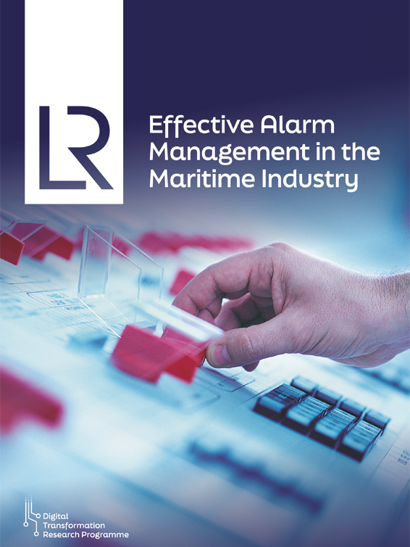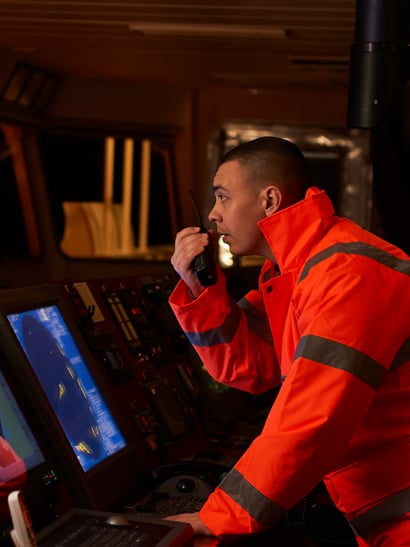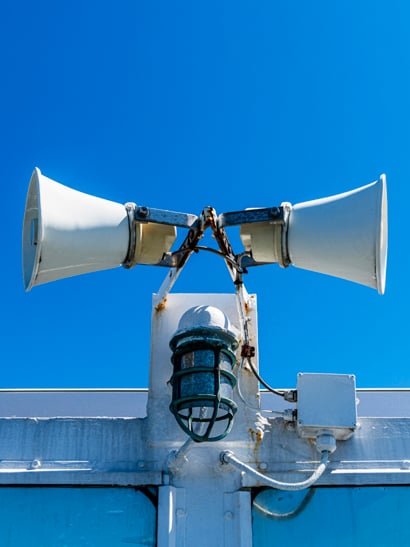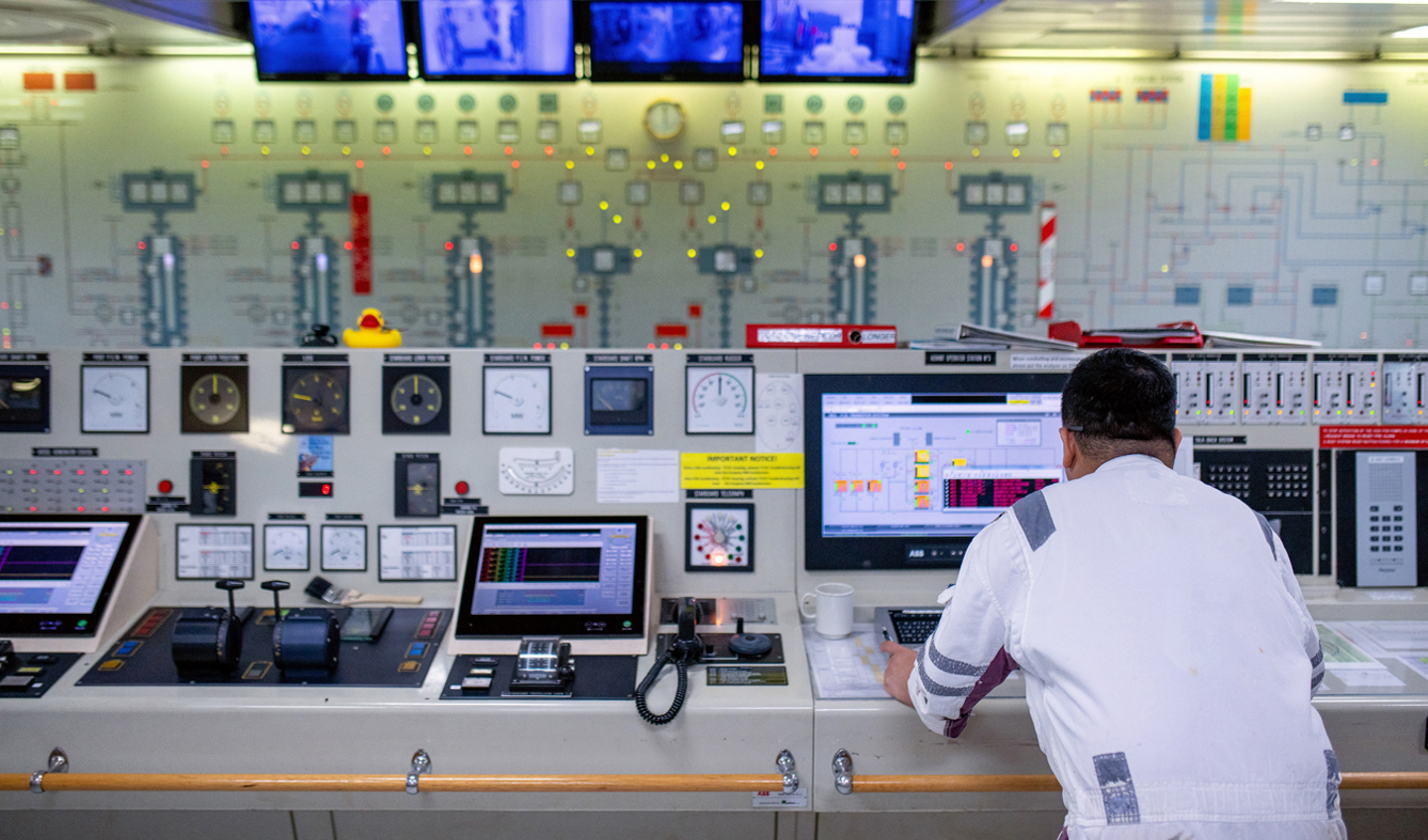Beep. Beep. Beep. It’s the unrelenting soundtrack to a bridge officer's or a control room engineer’s life. This may very well be the reality of watchkeeping for many such seafarers: an alarm system that shouts so often it’s hard to know when to listen.
For that reason, LR has now released the latest findings of its alarm management research, deepening its investigation into the operational reality of the alarm load on board modern ships. Following the successful launch of Alarm Management Report: Volume 1 in September 2024, it outlines a data-driven approach that offers consistent and actionable information for management to address alarm issues both now and in the future.
Volume 1 examined seafarers daily use of alarm systems, interviewing 65 maritime professionals across 15 vessels and data gathered through questionnaires. The findings indicated a generally positive view of alarm system usability, but also revealed several critical issues. The main concern was that the design and setup of alarms did not adequately account for human limitations, which affected trust in the alarm system and led to behaviours that could compromise maritime safety.
"Alarm response is not merely an automated process involving deterministic machines; rather, it is a human cognitive and physical process that requires thought, analysis, and action," explains Asger Christian Schliemann-Haug, Lead Data Scientist at LR Technical Directorate. "While computer display and data processing have evolved rapidly, human abilities have remained relatively unchanged. As a result, human factors now limit the number of alarms that can be managed successfully at any time."
These initial findings prompted the more detailed quantitative analysis in Volume 2, which uses performance targets of the widely recognised and accepted engineering practices of adjacent industries, specifically IEC 62682:2014, EEMUA 191, and ISA TR18.2.5.
The latest objective data supports Volume 1’s subjective experiences. The watchkeepers' experience of being overwhelmed by alarms during truly adverse times is validated by the findings regarding peak alarm rates and alarm flood conditions. Data collected from 11 ships, spanning over 2,000 days and 40 million events, indicates peak alarm rates far surpassing human capacities for comprehension and reaction.
Alarm Management Report – Volume 1


Passenger cruise ships, in particular, exhibit average daily alarm rates soaring into the thousands, with one large cruise ship showing an average of 105 alarms per hour, compared to the engineering officers' estimate of just 22. Another large cruise ship had an average of 77 alarms per hour. These are not isolated incidents; peak rates during upsets were found to be in the thousands of alarms within a mere 10-minute window on some vessels, with alarm floods lasting for hours and even days in some cases.
Besides benchmarking, the research addresses the annoyance seafarers feel towards "nuisance alarms", examining their origins and proposing solutions to alleviate the ongoing issues they cause. It shows how watchkeepers and shipowners can assess the ‘nuisance score’ or ‘cry-wolf’ factor of alarm systems. The report highlights that frequent or fleeting alarms, which repeat excessively or change quickly without operator action, induce concerning coping strategies.
In an observed cruise ship departure, 34 out of 42 observed alarms were silenced by the watchkeeper as repeating, irrelevant, or illogical. However, 106 alarms were recorded during the observation. These ‘missing’ alarms were either overlooked due to simultaneous occurrences or because the watchkeeper had silenced them and did not subsequently acknowledge them. This resulted in the alarm remaining inactive and not re-signalling (effectively being suppressed).
The new research also addresses the situation on ships with Unattended Machinery Spaces (UMS). The UMS concept is designed to reduce staffing by ensuring minimal alarms during rest periods. However, data reveals a significant proportion of these ships' operational spectrum, between 38% and 84%, does not meet this goal. On average, about 63% of typical rest periods between 10pm and 6am were interrupted by at least one alarm. This affects crew fatigue, which UMS are intended to manage for the engineering staff.
While the 'alarm problem' may be challenging and potentially unsolvable, it can be improved. The data reveals a particularly significant insight that the 'top 10' most frequent alarms contribute disproportionately to the overall alarm load. On average, bad actor alarms accounted for nearly 39% of the total alarm load. This means that significant alarm load reductions can be achieved by relatively little effort.
A case study on a large cruise ship showed that focusing on the most frequent alarms can significantly reduce their number. By analysing the top 10 alarms over six months and working with the crew, a 21% reduction was achieved in the first week, equivalent to 101,925 alarms in six months. Additionally, the information gathered onboard led to a further 27% reduction, eliminating 121,600 alarms. A separate cruise ship case study found a 32% reduction to be achievable in the first seven days using the same approach, with further reductions happening on a weekly basis.
These improvements were made using marine engineering skills and a data-driven approach outlined in the report, demonstrating that sophisticated techniques are not needed to address the identified issues. Often, problems like nuisance alarms stemmed from poor commissioning, process tuning, or instrumentation issues, and could be solved with targeted engineering efforts without OEM involvement. Resolving these issues required senior management's resolve and providing the crew with time and resources.
The report recommends that the maritime industry adopt an alarm performance evaluation approach, incorporating both objective and subjective metrics throughout the ship's lifecycle (similar to adjacent industries). Asger says: “Focusing initial efforts on identifying and rectifying the ‘bad actor’ alarms provides a practical foundation for existing vessels. Addressing the nuisance alarms not only ensures a prompt crew response to real alarms but also makes it easier for the watchkeepers to do their job, which is to operate the ship as safely and efficiently as possible.”


At the heart of the recommendations is a shift to a more human-centric design that integrates both human and machine strengths, while minimising their weaknesses. Effective human-centred design is about empowering watchkeepers with accurate, relevant information at the right time, ensuring good situational awareness so they can prevent abnormal situations rather than merely reacting to their consequences.
Drawing on real-world data and insights from LR’s Technology Programme, Surveyors and specialists have gained new insights as to how alarm management impacts overall safety. LR Advisory also assists shipowners in structuring an effective alarm management programme, one that employs the proven methods outlined in the research, leading to an alarm system that serves the crew rather than overwhelms them.
“Situational awareness is the centre of it all. We don’t see cars without windshields just because they come equipped with forward collision and lane departure warnings. In fact, those warnings act as extra safety measures, as the majority of people are perfectly capable of keeping their lane and maintaining a safe distance from the car in front of them. Similarly, it is more effective if maritime watchkeepers have a system where the safe operating window is clear and opaqueness is minimised,” says Asger.
Alarm management in the maritime industry – Volume 2
The third volume, planned for next year, will provide insights into designing alarms using objective criteria based on human limitations. These criteria aim to assist safety professionals, such as surveyors, who are not typically specialists in human factors or ergonomics.
“Currently, front line safety professionals such as surveyors are trained to make decisions on engineering aspects, not human behaviour. While it is a natural evolution in maritime safety to begin considering human factors in ship design, it won’t happen overnight. Therefore, the next phase of the research translates ergonomic principles into a pragmatic and verifiable format for maritime safety professionals. This will enable them to consistently evaluate the design and effectiveness of alarms among other types of alerts and system notifications in general,” Duncan Duffy, LR’s Global Head of Technology concludes.


